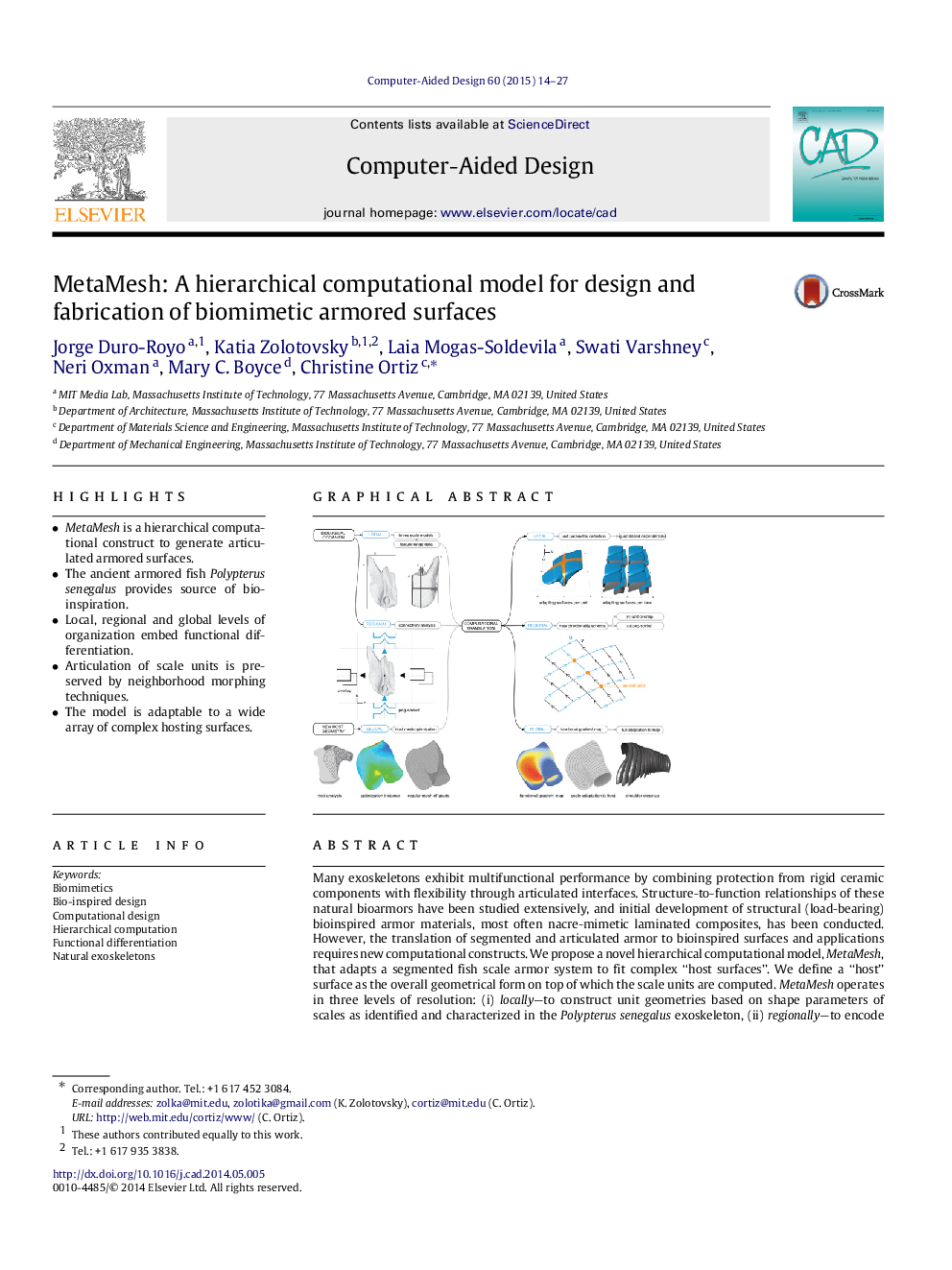| Article ID | Journal | Published Year | Pages | File Type |
|---|---|---|---|---|
| 440735 | Computer-Aided Design | 2015 | 14 Pages |
•MetaMesh is a hierarchical computational construct to generate articulated armored surfaces.•The ancient armored fish Polypterus senegalus provides source of bio-inspiration.•Local, regional and global levels of organization embed functional differentiation.•Articulation of scale units is preserved by neighborhood morphing techniques.•The model is adaptable to a wide array of complex hosting surfaces.
Many exoskeletons exhibit multifunctional performance by combining protection from rigid ceramic components with flexibility through articulated interfaces. Structure-to-function relationships of these natural bioarmors have been studied extensively, and initial development of structural (load-bearing) bioinspired armor materials, most often nacre-mimetic laminated composites, has been conducted. However, the translation of segmented and articulated armor to bioinspired surfaces and applications requires new computational constructs. We propose a novel hierarchical computational model, MetaMesh, that adapts a segmented fish scale armor system to fit complex “host surfaces”. We define a “host” surface as the overall geometrical form on top of which the scale units are computed. MetaMesh operates in three levels of resolution: (i) locally—to construct unit geometries based on shape parameters of scales as identified and characterized in the Polypterus senegalus exoskeleton, (ii) regionally—to encode articulated connection guides that adapt units with their neighbors according to directional schema in the mesh, and (iii) globally—to generatively extend the unit assembly over arbitrarily curved surfaces through global mesh optimization using a functional coefficient gradient. Simulation results provide the basis for further physiological and kinetic development. This study provides a methodology for the generation of biomimetic protective surfaces using segmented, articulated components that maintain mobility alongside full body coverage.
Graphical abstractFigure optionsDownload full-size imageDownload as PowerPoint slide
